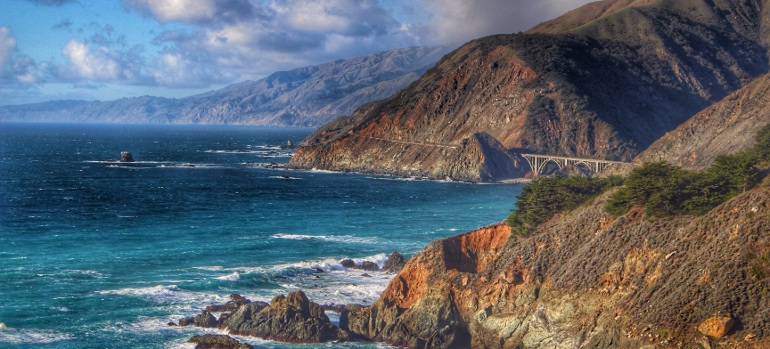Trip 7 - California
Trip 7 takes place predominantly in California. If you are starting near the middle of the country or points east of there, it may be interesting to follow Historic Route 66 to get to the start.
Like Trip 2, Trip 7 could be split into two trips because there is so much to experience if you visit the alternative sites. There is also a weather issue which could make you want to split the trip. This trip includes some of the hottest sites of the Experiencing Life series, like Death Valley and Joshua Tree National Parks, and Yosemite National Park can get pretty cold. If you go during the summer, the hot sites could be quite oppressive. If you go in the Spring or Fall, you could run into cold and/or snow in Yosemite. The description below will assume you are doing the whole trip at once but you can decide if you want to do the first part at a different time than the second.
The trip starts in southern California. After following Route 66 to Los Angeles, we start at the La Brea Tar Pits. The La Brea Tar Pits are famous for the Pleistocene epoch fossils found there. These include mastodons and sabre-toothed tigers, among others.
The next site is the Santa Ynez Valley. The focus of a visit to this wine country area featured in the movie Sideways, is on the process of fermentaion and on the plant family that contains grapes.
From wine country, the trip takes you along the coastal highway through Big Sur and next to the Monterey Bay Marine Sanctuary. There are a number of visitor centers, natural reserves and other points of interest highlighting the organisms of the Pacific Ocean along the route. At the end of this stretch, in the city of Monterey, is the world-class Monterey Bay Aquarium.
The first alternate stop is inland from Monterey at Pinnacles National Park. This is a location where Condors are making a recovery, after being on the brink of extinction.
From Pinnacles, the trip heads to the Sierra Nevada mountains and Yosemite National Park. One of the flagship parks of the National Park Service, with an assemblage of organisms diverse enough to qualify it as a Conservation International Hotspot, a highlight will be the giant sequoia trees.
Then it's on to Mono Lake, to the east of Yosemite. Mono Lake is an alkaline, salty lake supporting Brine Shrimp, Alkali Flies and many birds. There are also unique rock formations, called "Tufa", poking out of the lake at various places. At Mono, you will be at the edge of one of the four U.S. desert types: the Great Basin Desert. As you drive to the next stops, swing east through Tonopah, Nevada to get a good feel for this desert. This desert can be cold, which emphasizes that a desert is defined by a lack of water, not by high temperatures. You also would have experienced this desert in Trip 4 at Great Basin National park.
The next alternate site isn't necessarily one to actually visit but one to ponder. Yucca Mountain, just east of Death Valley, has been studied as a site for disposal of the nation's nuclear waste. If we are to have nuclear power, we will need long-term solutions for dealing with the waste. The pros and cons of this and other sites can be explored.
The next site is Death Valley National Park. Death Valley is the hottest, driest and lowest national park. The traits evolved for organisms to cope with this environment are the focus.
Just east of Death Valley, across the Nevada border, is Ash Meadows National Wildlife Refuge. This oasis in the desert is the home to 27 species that are found nowhere else, including the Devils Hole Pupfish which lives in one tiny pool and has been called the world's rarest fish. The focus here is on endemic species.
South of Ash Meadows, the next stop is the Nopah Range, a site known for its fossilized stromatolite formations.
If you are visiting the alternate sites, the next stop brings you to a representative of the mojave desert: Mojave National Preserve. A fairly new addition to the National Park Service's quiver, the preserve is a less-visited version of Joshua Tree. Here, and at Joshua Tree, the focus is on the Mojave Desert, another of four major deserts in the U.S.
Joshua Tree National Park is the next stop. The park's namesake plant is endemic to the area.
The trip then takes you to San Diego. The San Diego area is home to the world famous San Diego Zoo and it's sister facility, the Safari Park. As with other zoos, the focus is on animals that are non-native to North America. A particular focus in San Diego is on marsupials.
Just outside San Diego is Mission Trails Regional Park. Here the focus is on the chaparral "forest" type. Not quite a desert nor a grassland nor a forest, chaparral is a unique biome.
|



